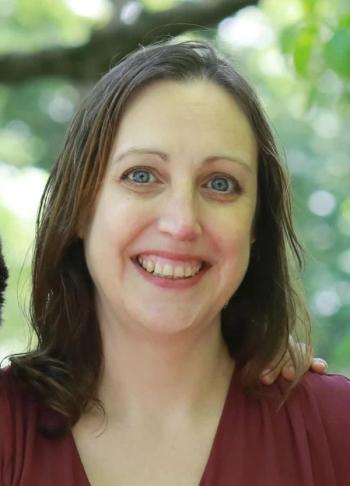
Pervasive inefficiency in veterinary clinics
Being busy in a veterinary hospital doesn't mean being productive-or profitable.
Linda, a technician at Allison Veterinary Hospital, tapped the counter. She'd been at the hospital since 6:30 a.m. managing patients. It was now 9:30 and the first appointment of the day hadn't shown up, so the staff were waiting for the next.
Linda's boss, Dr. Cynthia Allison, was growing impatient. She asked about Ms. Amanda Potts and Buster and Muster, the two Boston terriers due at 9:30.
"They're not here yet, but Mr. Hammond and Jake just walked in the door," Linda said. Jake, a golden retriever, was losing weight and Dr. Allison was worried about cancer.
Dr. Tim Watson, a new grad with an interest in orthopedic surgery, was off today. When he was in the practice, he often spent hours online and with his nose in a book, looking forward to doing his first TPLO.
By 10 a.m., the front desk receptionist, Jan Kirkpatrick—who had been answering the phone nonstop since 8 but had made no appointments—answered questions and handled refill requests. She finally looked up and told Mr. Hammond he could take Jake into an exam room. She noticed that Mr. Hammond's eyes were red and puffy.
Just then Ms. Potts burst through the front door amid a cacophony of barking. "I know, I know, I'm late," she announced above the clamor as her charges wound around her ankles (and the nearby plant stand). In a blink, half a gallon of potting soil and African violets were distributed throughout the waiting area. Ms. Potts didn't seem to notice. Jan ran around the counter with a folding chair for Amanda to sit in while untangling her ankles.
"What a morning already!" thought Jan as she looked frantically for a broom. But then she realized it wasn't really that atypical—just a bit different in a familiar sort of way.
In the exam room Linda was trying to talk to Mr. Hammond about Jake over the din in the waiting room. It seemed that Jake was worse. In a few minutes Dr. Allison walked in and started to review Jake's history. It was a difficult conversation. After explaining what that problem might be, Dr. Allison gave Linda a list of tasks—blood tests, radiographs, urinalysis and a call to the university. It was a lot of work and the other technician had called in sick this morning. Dr. Allison hoped the CBC machine wasn't acting up.
In the meantime, Ms. Potts, eager to talk about her list of concerns about Buster and Muster, grew tired of waiting and walked into an empty exam room without instruction from the hospital staff. Her dogs tracked in residual potting soil.
Dr. Allison entered the exam room with Buster and Muster as Linda carted Jake off to the back. In the reception area, three more people were now waiting—two were expected and one was not. Then the phone rang. The caller was a frantic, longtime client who wanted to know if she could drop her cat Willie off in a few minutes—she thought he was plugged again.
Jan glanced at the time: 11:15.
What's wrong with this picture?
With no-show or late clients, open time slots and a lack of traffic, it's possible for a veterinary clinic to pull in zero profit between opening and noon on any given day. The hours may be busy, but the time is spent with few clients.
This is the crux of the problem in veterinary practices today—there are multiple inefficiencies in the delivery model. If you ask your team members whether or not they're busy, they'll invariably say yes. The phone is ringing; there are tests to run. But the phone calls aren't resulting in appointments, just a lot of questions and refill requests. An honest practice owner will ask, "If we're so busy, why am I struggling to pay the bills?" The more appropriate question to ask is: "Am I productive?"
Veterinary medicine is productive at times, but it's haphazard. If a practice is unprofitable or has too much capacity, does that mean there are too many veterinarians or too many veterinary clinics? The answers have eluded the leaders of our profession for years, and so we conduct studies.
The economics of our profession are complicated and ambiguous. The American Veterinary Medical Association (AVMA) and other groups have conducted economic studies for more than two decades and arrived at contradictory conclusions. But the most recent investigation, the 2013 AVMA Workforce Study, indicates that there is excess capacity in the profession—the ability to provide services beyond the quantity demanded at a price that consumers are willing to pay—in certain geographic areas and sectors of the veterinary profession. The study also suggests that this excess capacity will persist through 2025.
Working overtime—but not working enough
On average, veterinarians in clinical practice are working overtime—more than 40 hours per workweek—despite this excess capacity. This paradoxical situation has developed, to some extent, because practices have extended their hours to provide non-emergency services. In addition, indivisibility of labor is a problem in all healthcare fields. Plus, using the most efficient amount of labor is much more difficult in veterinary practice because most are relatively small or, in the case of large animal practices, provide ambulatory services. This, of course, will go on indefinitely until the marketplace corrects itself in some dramatic way.
Although there has been a decline in solo practice over time, it still remains a dominant model in veterinary medicine. I believe two factors put solo practitioners at a disadvantage:
> Animals get sick 24 hours a day.
> The cost of practicing high-quality medicine, especially in terms of staffing and equipment, has skyrocketed.
Owners of smaller practices cannot effectively and easily spend time managing their hospitals and at the same time remain responsive, compassionate animal healers. In addition, they can't match the salaries and benefits of other businesses they compete with for labor. Few veterinarians want to give up client time for management time.
But the problem of appearing to be busy while remaining unproductive is ever-present in veterinary medicine, even in larger hospitals. Excess capacity exists because of inefficiency. The delivery model is broken and it has been for some time. In our profession, excess capacity is related to overcapitalization. That is, there is too much brick and mortar and equipment spread out over too many practices. Our profession is a mile wide and an inch deep.
Possible solutions
Here are a few solutions that could alleviate the problem:
Consolidate. This will create better efficiencies in professional management, labor and capital for the profession. Unfortunately, veterinarians will lose some control. This will be a bitter pill for some to swallow, but the benefits outweigh the bitterness.
Close veterinary schools. The growth in the number of veterinary graduates during the past 20 years has not been driven by the public's need for more veterinarians but by the universities' need to compensate for declining federal and state revenues. If capital resources remain stagnant or decline further, academia may not be able to sustain all the veterinary schools now open.
Close instead of sell. The number of "no-lo" practices—those with little or no value—is growing, and an excess capacity of veterinarians will exacerbate this trend. Expectations of current practice owners to sell these practices are high in spite of reality. After all, an owner has devoted years or decades to his or her practice. It only makes sense that it's worth a lot of money, right? Closure is an option.
Too many veterinarians
With excess capacity, along with student debt, there is only one inescapable conclusion: we need fewer graduates and more efficient service delivery in the marketplace. Getting there will be difficult. Veterinary schools need to look beyond the government and the student for support. They should restrict enrollment and consider adopting a more aggressive hybrid business-client model that more realistically reflects delivery costs. We will surely see the closure of some practices and mergers and consolidation of others. The marketplace will sort this out and there will be gnashing of teeth. We are peering over a cliff and must watch our step. One thing is sure: there will be more studies.
Dr. David Lane owns and manages two practices in southern Illinois. He is a consultant, speaker and author of numerous veterinary management articles. He can be reached at
Newsletter
From exam room tips to practice management insights, get trusted veterinary news delivered straight to your inbox—subscribe to dvm360.




